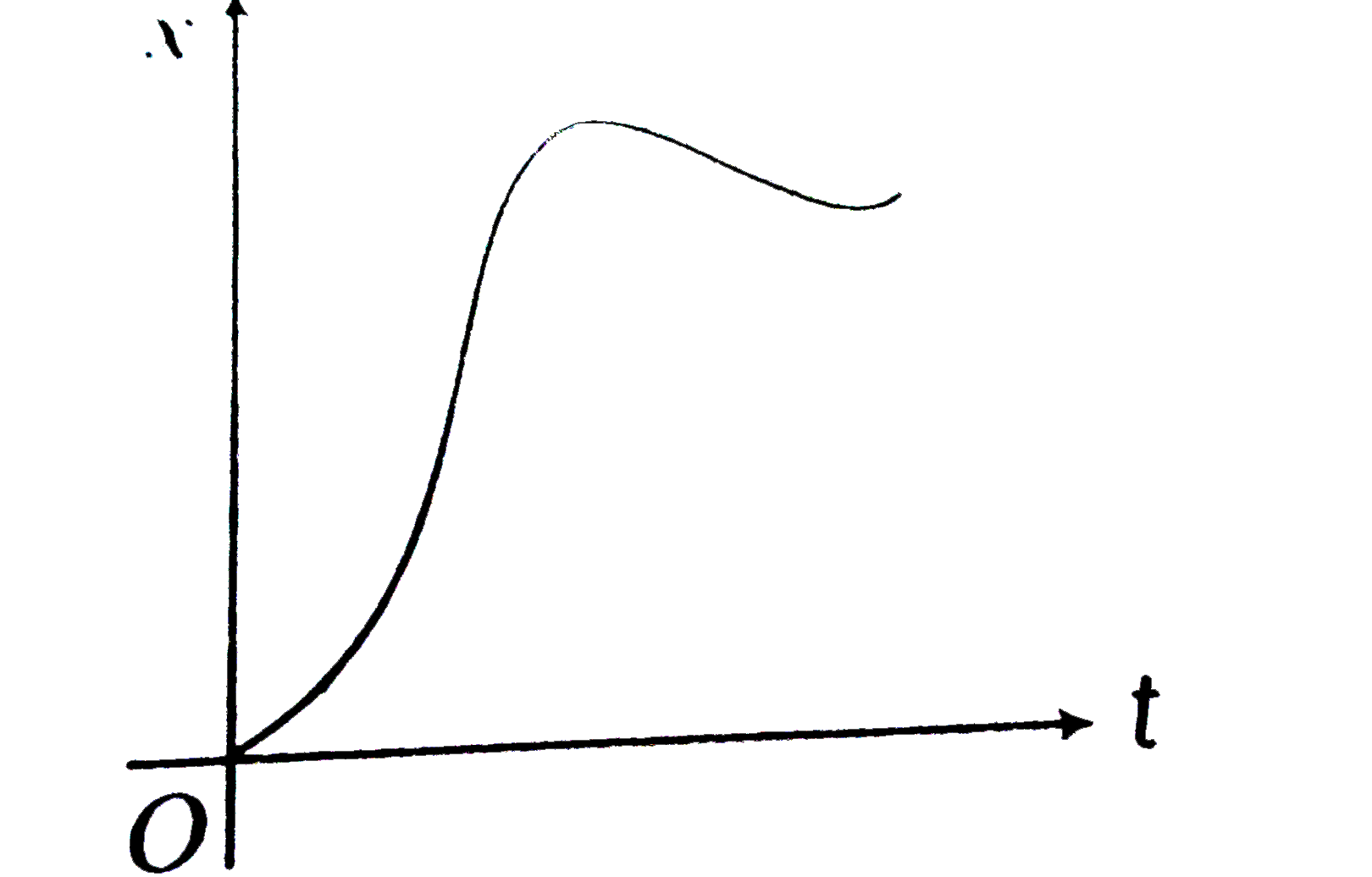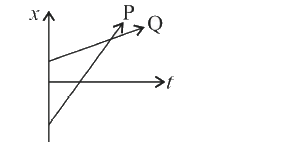Figure shows the displacement (x)-time (t) graph of particles A and B. Which of the following statements is correct?
Fig. 2.26 
A
A is accelerated B is restarted
B
A and B move with uniform equal speed
C
Both A and B move with uniform speeds but speed of A is more that that of B
D
Both A and B move with uniform speeds but speed if A is less than that of B
Text Solution
The correct Answer is:C
x-t graph is a straight line in either case, velocity of both is uniform. Since the slope of x-t graph for A is greater, therefore, velocity of A is greater than that of B.
|
Topper's Solved these Questions
- MOTIONBOOK - MCGROW HILL PUBLICATIONCHAPTER - MOTIONEXERCISE - HIGHER ORDER THINKING QUESTIONS
48 Videos
- MISCELLANEOUS QUESTIONSBOOK - MCGROW HILL PUBLICATIONCHAPTER - MISCELLANEOUS QUESTIONSEXERCISE - PART-B
99 Videos
- REFLECTION OF LIGHT BOOK - MCGROW HILL PUBLICATIONCHAPTER - REFLECTION OF LIGHT EXERCISE - HIGHER ORDER THINKING QUESTIONS
10 Videos
Similar Questions
Knowledge Check
Figure below shows the displacement-time curve of the particles A and B. Which of the following statements is correct?
 Aboth A and B move with uniform equal speedBA is accelerated and B is retardedCboth A and B move with uniform speeds but the speed of A is more than the speed of BDboth A and B move with uniform speeds but the speed of B is more than the speed of A.
Aboth A and B move with uniform equal speedBA is accelerated and B is retardedCboth A and B move with uniform speeds but the speed of A is more than the speed of BDboth A and B move with uniform speeds but the speed of B is more than the speed of A.The displacement (x)-time (t) graph of a particle is shown in figure. Which of the following is correct ?
 AParticle starts with zero velocity and variable accelerationBParticle starts with non-zero velocity and variable accelerationCParticle starts with zero velocity and uniform accelerationDParticle starts with non-zero velocity and uniform acceleration
AParticle starts with zero velocity and variable accelerationBParticle starts with non-zero velocity and variable accelerationCParticle starts with zero velocity and uniform accelerationDParticle starts with non-zero velocity and uniform accelerationThe displacement (x) - time (t) graph of a particle is shown in figure. Which of the following is correct?
 AParticle starts with zero velocity and variable accelerationBParticle starts with non - zero velocity and variable accelerationCParticle starts with zero velocity and uniform accelerationDParticle starts with non - zero velocity and uniform acceleration
AParticle starts with zero velocity and variable accelerationBParticle starts with non - zero velocity and variable accelerationCParticle starts with zero velocity and uniform accelerationDParticle starts with non - zero velocity and uniform acceleration
The displacement (x)-time (t) graph of a particle is shown in figure. Which of the following is correct ?

View SolutionFigure shows the displacement (x)-time (f) graph of a particle moving on the X-axis.

View SolutionFigure shows the displacement time graph of a particle moving on the X-axis

View SolutionFigure shows the displacement time graph of a particle moving on the X-axis

View SolutionFigure shows the displacement-time graph of a particle moving on the X-axis

View Solution

